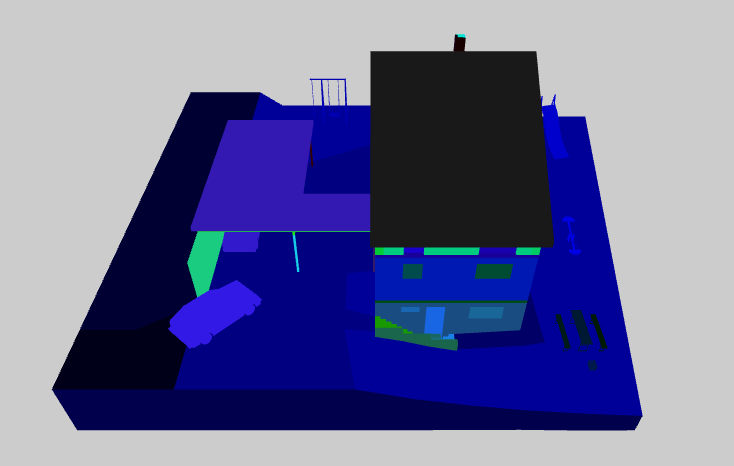
My latest IFC renderer. This time in WebGL. Code is a bit crusty and the file size can be a LOT smaller, but it works, and shows the different components that can be interacted with as different colours. Click image for link to WebGL page.

Had a look at some more advanced IFC file renderers. There are some nice ones around. Most use (crappy) Java to hook into the meta-data, or have a very very slow WebGL implementation, which I suspect means that they are trying to render each IFC component with a separate draw call, which is kind of the obvious but horribly inefficient way to do it.
I have a different way of thinking about this - create a buffered graphics version of the STEP stuff that has a proper look-up table of indexed meta-data. Each vertex knows which numbered group it's in. These can be rendered as unique colours to a separate framebuffer, which allows you to draw the whole mesh in one highly-parallelised draw call, as well as "for-free" providing mouse hover/click to get the IFC meta-data about the geometry underneath the cursor. So in essence, just much better use of GPU data and shader parallelism.
I think a manual stage is still necessary to allow you to selectively choose what parts of the hulking file are of relevance to your particular visualiation. Do you want to show the interior or just the exterior? Do you want all the detail of individual shower heads and for-scale furniture, or is that just clutter? There are also some problems that require attention first - triangulation issues, and masses of potentially redundant vertex data. The file could a lot smaller if these were removed. I did all this manually in the past (I didn't bother this time), but it could potentially be automated.
The different shades of colour in my demo are actually displaying the different IFC components that can be interacted with separately. There's no need to actually display these colours to the audience of course, but it might be neat to, for example, highlight the component that's underneath the mouse cursor with some special colouring or outline.